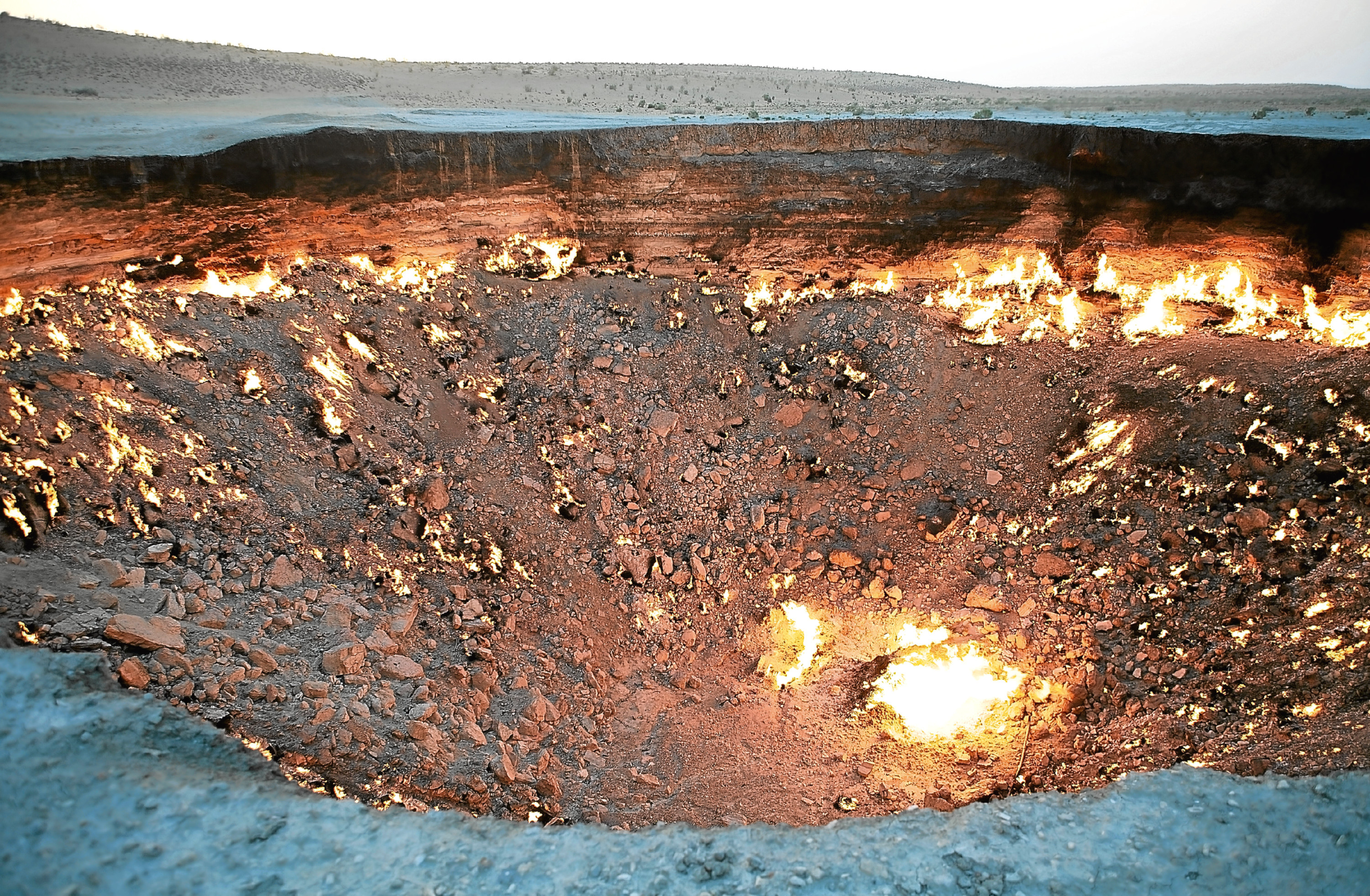
IT’S the place none of us wants to end up — in one part of the world, however, the locals flock to the Door of Hell!
Even tourists — 150,000 of them a year — come to this damned place, to set up tents and camp here, just to be close to the raging fires of eternal damnation.
It’s actually a desert village called Derweze — which translates as Doorway — in the Turkmenistan region of Ahal, and the story behind it is bizarre.
It was in 1971, while drilling here for natural gas, that Soviet geologists struck into a massive underground cavern and found it contained lots and lots of methane.
Their digging caused the ground to crumble under them, a huge drilling rig was sucked into the earth, and they decided the best thing to do was to set fire to the gas, to prevent it spreading right across the desert.
That’s why, to this day, a huge fire, bigger than an American football field, rages in this scary place, making the night sky orange and heating the already-hot day.
The fiery crater is almost 250 feet wide and 100 feet deep, and has become a popular tourist magnet, the longer it has burned like this.
It’s 160 miles north of the Turkmenistan capital, Ashgabat, but that doesn’t deter people from outside the country taking a marathon taxi trip deep into the desert just to set eyes on the Door of Hell.
Wild desert camping — no guesses how the campers get their heat — close by is said to be one of life’s joys, though it seems rather too close to Hell for us to fancy it.
Its setting in the middle of the Karakum Desert makes it all the stranger, when you suddenly see this huge bright-orange light, and then hear its boiling mud.
The country’s wonderfully-named President, Gurbanguly Berdimuhamedow, came to see it for himself in 2010, and ordered the decades-old fire to be put out, but to this day, it burns away.
He is concerned that its hellish flames could adversely affect other priceless oil and gas exploration in the region, but so far, nobody has stepped forward to try to finally douse the flames of Hell.
It’s a Devil of a problem, and you wouldn’t want dark forces to come after you in revenge.
Funnily enough, those careless Soviets back at the start of the 70s estimated it would burn itself out in a matter of weeks.
That was because they didn’t think there was a substantial amount of gas under the desert floor. Wrong!
Explorer George Kourounis, brave man, became the first person to set foot on its bottom, during a documentary two years ago.
Turkmenistan, meanwhile, is seeing out the financial bad times and hopes one day to put the flames out and begin finding more of this gas across the desert.
If their drilling goes as well as the Soviets’ did in ’71, there could be a Hell of a price to pay.
READ MORE
Boulder choices: The places thrillseeking holidaymakers are flocking to
I’m not a lunatic. I just enjoy adventures, says Scots TV explorer Andy Torbet

Enjoy the convenience of having The Sunday Post delivered as a digital ePaper straight to your smartphone, tablet or computer.
Subscribe for only £5.49 a month and enjoy all the benefits of the printed paper as a digital replica.
Subscribe